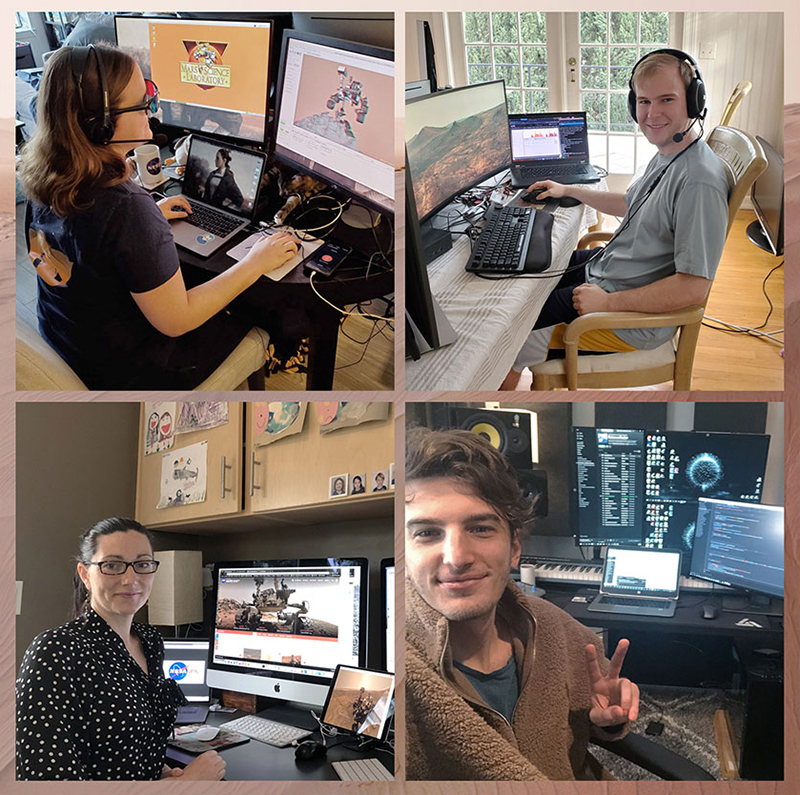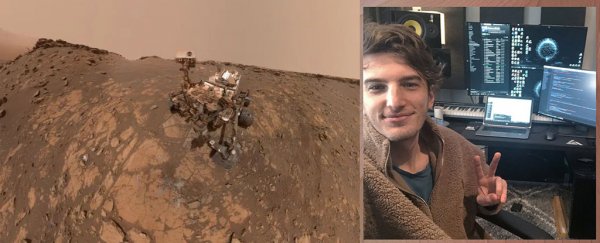In the midst of the current coronavirus pandemic, many of us find ourselves adjusting to working from home, with all the distractions of kids, pets, unfinished DIY projects and Netflix specials to contend with.
This move to WFH has touched every business and industry where such a shift is possible, and luckily that includes the team responsible for the Mars Curiosity rover, which normally operates out of NASA's Jet Propulsion Laboratory in California.
The scientists from JPL have been sharing how they've adapted to working from their living rooms, home offices and kitchen tabletops, even without access to some of the highly sophisticated equipment installed at their lab.
 Some of the team working from home. (NASA/JPL-Caltech)
Some of the team working from home. (NASA/JPL-Caltech)
On March 20, for the first time in Curiosity's history, none of the people operating it were at the JPL offices – adding a new layer of remote working to a team already managing the movements of the vehicle at a distance of close to 200 million kilometres (124 million miles).
To achieve this, the scientists have had to get creative: monitors, headsets and other equipment has been distributed (observing social distancing rules), while video conferencing and chat apps have been enlisted to keep everyone in touch with each other.
"We're usually all in one room, sharing screens, images and data," says the team leader, astrophysicist Alicia Allbaugh. "People are talking in small groups and to each other from across the room."
Trying to replicate this virtually – and having to make sure everyone is on exactly the same page – has added an hour or two to the time it takes to plan manoeuvres each day, but the work is getting done.
The scientists have found themselves without the 3D goggles they typically use to analyse pictures from Mars – these goggles, like VR headsets, require powerful computers in order to operate properly.
Now they're using simpler red-and-blue lens glasses for the job. They're less advanced and less comfortable than the lab goggles, but they're enabling the Curiosity team to plan out rover routes and arm movements.
The rock-drilling actions coded into Curiosity on March 20 were successfully carried out a couple of days later, at a site on Mars known as Edinburgh. Several tests and one full practice run were carried out before the commands were sent.
Curiosity continues to capture some stunning imagery and make some fascinating discoveries as its mission continues nearly eight years after it landed, and that work is going to carry on – even if the NASA JPL team can't meet in person to do it.
"It's classic, textbook NASA," says the head of science operations, astrophysicist Carrie Bridge.
"We're presented with a problem and we figure out how to make things work. Mars isn't standing still for us; we're still exploring."
